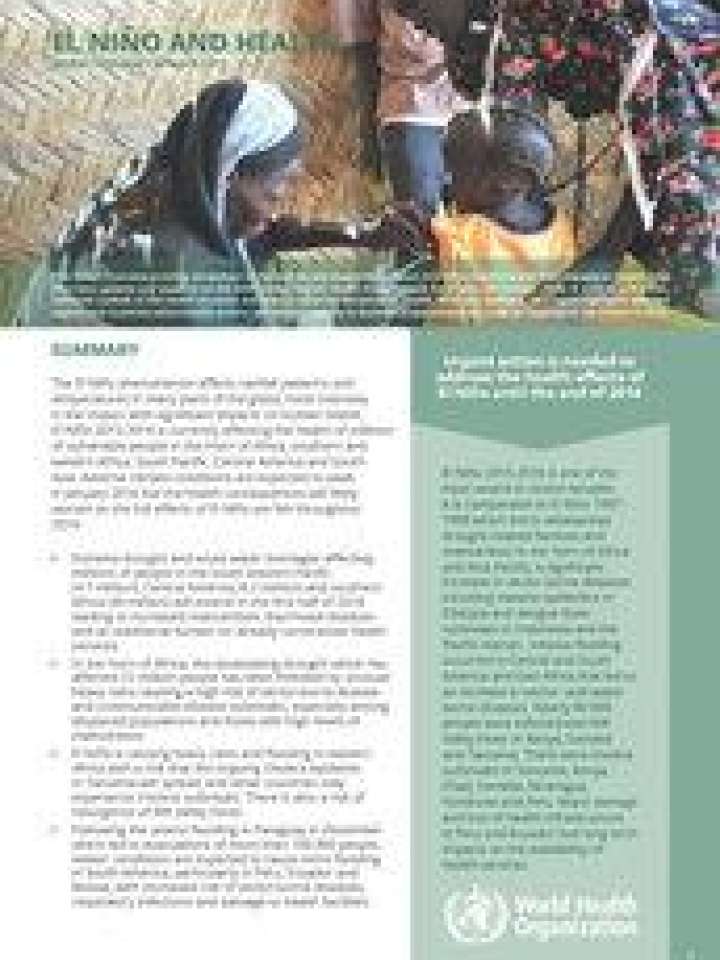El Niño and health
This report provides an analysis of the current and expected evolution of El Niño conditions and their impacts on health. It updates and expands on the World Health Organization (WHO) Status Report: Health Preparedness for El Niño (30 October 2015). It also aims to give a consolidated outlook of the health situation and actions taken by Ministries of Health, WHO and partners. This report highlights affected regions and countries where health actions are needed urgently to increase preparedness and scale up response to the El Niño in 2016.
The recommended general preparedness actions are the following:
- Assess and monitor how El Niño can alter health risks in your area:
- Establish and maintain dialogue with national meteorological and hydrological services (NMHS) and other key actors, such as the national disaster management agency.
- Monitor seasonal forecasts, real-time conditions, local rainfall and temperature forecasts.
- Develop strategies and activate emergency preparedness and response measures:
- Review and develop plans for preparedness and response for the health sector, taking into account direct consequences of climate-related hazards on health, including in on-going emergencies.
- In line with the plan for preparedness and response, put in place adequate operational capacities, including human resources, supplies.
- Develop effective communication strategies with NMHS and other partners:
- Establish clear and consistent messages to keep the public and health sector response agencies informed about climate hazards and their health risks.
- Strengthen knowledge and information management mechanisms to account for El Niño health consequences.
Explore further
